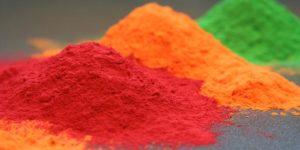Exploring the Future Development Trends of Powder Coatings

Powder coatings have emerged as a popular choice in the coating industry due to their durability, environmental friendliness, and versatile applications. As the demand for sustainable and high-performance coatings continues to rise, the future of powder coatings holds significant potential for further advancements. This article delves into the detailed trends shaping the future of powder coatings, encompassing technological innovations, environmental sustainability, and diverse application possibilities.
- Technological Advancements:
The future of powder coatings hinges on technological advancements that aim to enhance performance, efficiency, and applicability.
a) Advanced Powder Formulations:
The evolution of powder formulations will focus on tailored solutions to meet specific industry requirements. Innovations in raw materials and additives will enable the development of powders with enhanced properties, including improved adhesion, flexibility, and chemical resistance. Furthermore, the exploration of nano-particle technology may lead to groundbreaking advancements in functional and decorative coatings, opening up new possibilities for specialized applications.
b) Precision Application Methods:
Advancements in application technology continue to drive efficiency and quality in powder coating processes. Emerging techniques such as electrostatic fluidized bed coating and automated robotic systems enable precise and uniform application, reducing material wastage and enhancing the overall finish. Additionally, the integration of artificial intelligence and machine learning into coating systems will enable real-time adjustments, resulting in optimized coating thickness and consistency.
c) Sustainable Curing Techniques:
The evolution of curing methods aims to address energy consumption and environmental impact. Novel curing technologies, including near-infrared and LED UV curing, offer reduced energy requirements and shorter curing cycles, consequently lowering carbon emissions and production costs. Furthermore, the development of low-temperature cure powders will enable the coating of heat-sensitive substrates, expanding the potential applications of powder coatings.
- Environmental Sustainability:
The future of powder coatings aligns with the global sustainability agenda, driving advancements in eco-friendly solutions and waste reduction.
a) Emission-Free Coating Processes:
Powder coatings inherently eliminate volatile organic compound (VOC) emissions, contributing to a cleaner and healthier environment. With stricter environmental regulations and a growing emphasis on sustainable practices, the shift towards powder coatings as a low-emission alternative will accelerate, particularly in industries where air quality standards are paramount, such as healthcare and food processing.
b) Circular Economy Initiatives:
Efforts to minimize waste and promote recycling within the powder coating industry will gain momentum in the future. Innovations in powder recovery systems and efficient reclamation processes will enable the recycling of oversprayed powders, reducing material waste and production costs. Additionally, the development of bio-based and biodegradable powder coatings will offer sustainable alternatives, further supporting the transition towards a circular economy model.
- Expanding Application Possibilities:
The future of powder coatings envisions diverse and innovative applications across an array of industries, fueled by evolving consumer preferences and technological advancements.
a) Automotive and Transportation Innovations:
The automotive industry will continue to embrace powder coatings for exterior and interior applications, driven by the need for high-performance, corrosion-resistant, and aesthetically appealing finishes. The development of advanced color-matching technologies and textured finishes will cater to evolving design trends and vehicle customization, while lightweight and conductive powder coatings will facilitate the production of electric and autonomous vehicles.
b) Sustainable Architecture and Infrastructure Development:
In the construction and architectural sectors, powder coatings will play a pivotal role in sustainable design and preservation. The integration of self-cleaning and anti-microbial powder coatings will contribute to building longevity and hygiene, aligning with the growing demand for sustainable and health-centric construction materials. Additionally, the expansion of vibrant and heat-reflective powder coating options will enable designers to enhance building aesthetics while minimizing energy consumption.
c) Consumer Goods and Lifestyle Products:
The consumer goods industry will witness an increased adoption of powder coatings for diverse applications, ranging from electronics and sporting goods to furniture and home appliances. The customization potential of powder coatings, including metallic, matte, and textured finishes, will cater to personalized consumer preferences, while the development of antimicrobial and easy-to-clean coatings will elevate product durability and hygiene, aligning with evolving consumer expectations for sustainable and functional goods.
The future of powder coatings is poised for significant advancements, driven by technology, sustainability, and versatile applications. As industry stakeholders embrace innovation and sustainability as core principles, the continued evolution of powder coatings will lead to enhanced performance, reduced environmental impact, and expanded application possibilities. By staying informed about these trends, businesses can strategically position themselves to leverage the benefits of powder coatings, contributing to a more sustainable and visually exciting future across various industries.

 D5 Creation
D5 Creation